Products
Wire Mesh Demister
Wire mesh demister is also called mist eliminator, wire mesh demister, gas-liquid separator, etc.
It is mainly used for separation with diameter greater than 3 μ m~5 μ M droplets. When the gas with mist rises at a certain speed and passes through the filter wire mesh in the middle of the grid, the mist collides with the wire and adheres to the surface of the wire due to the inertia of the mist rise.
The further diffusion of the mist on the wire surface and the gravity settlement of the mist itself make the mist form large droplets to flow along the wire to its interleaving place. Due to the wettability of the wire, the surface tension of the liquid and the capillary action of the wire, the droplet becomes larger and larger until its own gravity exceeds the combined force of the rising buoyancy of the gas and the surface tension of the liquid, it is separated and falls. As long as the operating gas velocity and other conditions are properly selected, the defoaming efficiency can reach more than 99% after the gas passes through the wire mesh demister, and the purpose of completely removing fog can be achieved.
Product Usage:
Wire Mesh Demister is an efficient gas-liquid separation device, which is widely used in chemical industry, petroleum, sulfuric acid, medicine, light industry, metallurgy, machinery, construction, aviation, shipping, environmental protection and other industries.
Product features:
● Simple structure and light weight.
● Large porosity, small pressure drop.
● large contact surface area and high defoaming efficiency.
● convenient installation, operation and maintenance.
● long service life.
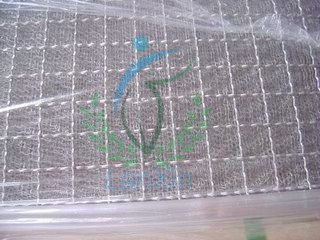
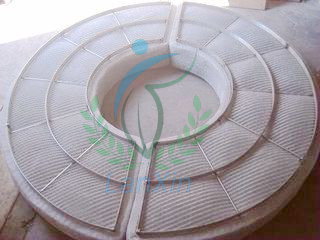
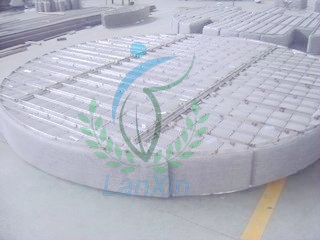
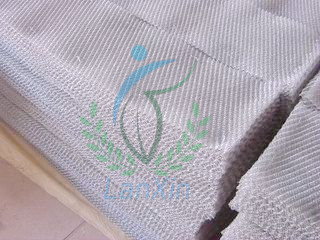
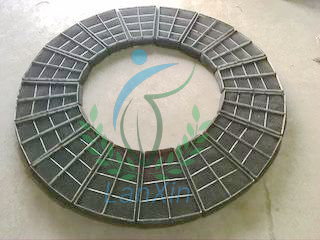
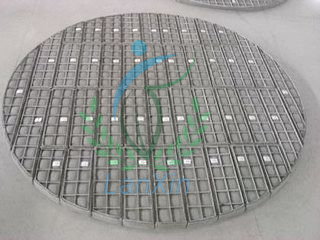
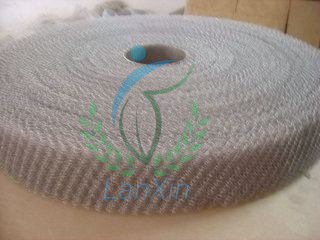
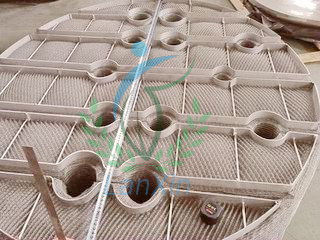
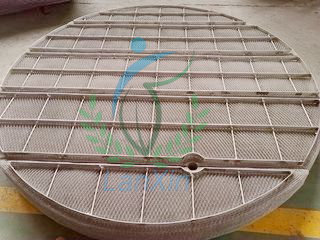
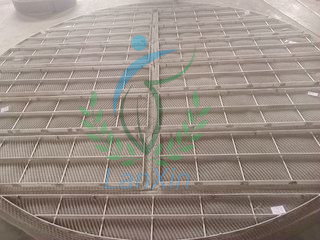
Specifications
| STYLE NO. | Void Ratio | Surface Area | Density | Wire Diameter | Equivalent to: |
|---|---|---|---|---|---|
| YORK | |||||
| SK-80 | 99.0 | 158 | 80 | 0.25φ | 931 |
| SK-144 | 98.2 | 280 | 144 | 0.25φ | 431 |
| SK-192 | 97.5 | 375 | 192 | 0.25φ | 421 |
| SW-216 | 97.2 | 905 | 216 | 0.12×wires stranded | |
| SW-432 | 94.5 | 1,780 | 432 | 0.12×12wires stranded | 333 |
Styles
|
STYLE
NO.
|
Description |
|---|---|
| SK-80 |
For a given load of mist, the highest flow velocity is achieved of all styles. Ideal where it is required to minimize the pressure loss, possible clogging is concerned, the size of particle to be collected is relatively large, and/or a very high efficiency is not required. The standard thickness is 150 mm. For conditions corresponding to those of SK-192, the thickness of 200 mm is applied. |
| SK-144 | Used for general purposes. An efficiency of 98 to 99% is achieved at a velocity of 1 to 5 m/sec. |
| SK-192 |
Used where an especially high efficiency is required. While a pressure loss is slightly higher, it achieves an efficiency of 99 to 100% with particle sizes 3μ or more at a velocity of 1 to 6 m/sec., and is ideal where an efficiency of 90% or more is required at a velocity of 1 m/sec. or less. |
| SW-216 |
Used for collecting fine particles of 1 to 3μ in size. Especially for a low-density mist of 1.0 g or less, it is used in a thickness of 200 to 300 mm. |
| SW-432 | Used for collecting fine particles. An efficiency higher than that of SW-216 can be achieved. The most remarkable characteristic is that it provides a high efficiency with a reduced thickness. |


